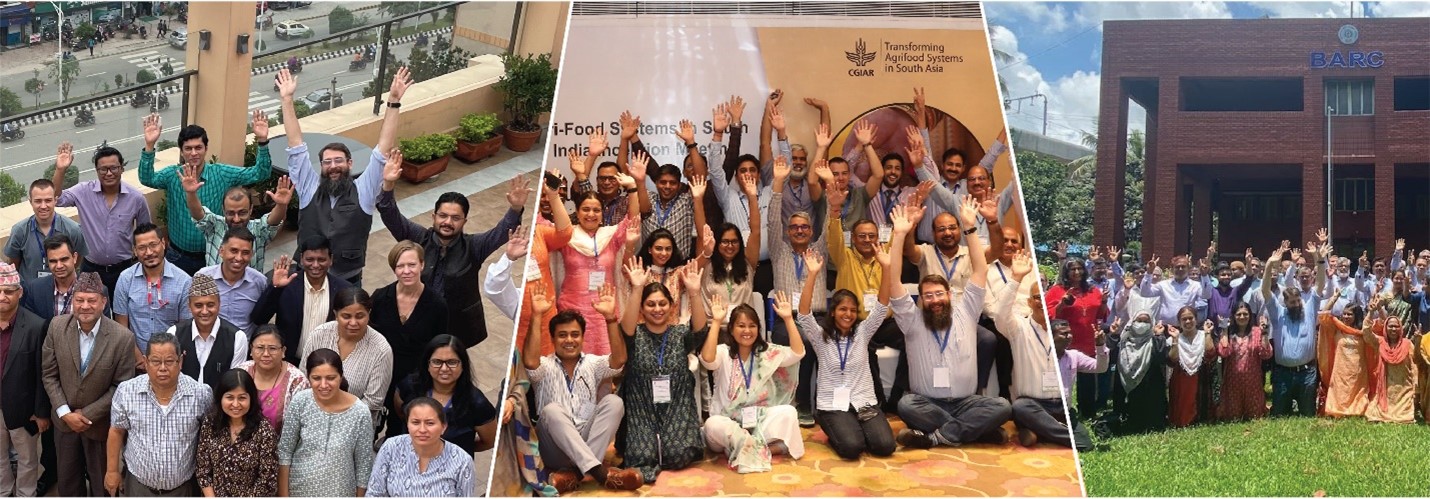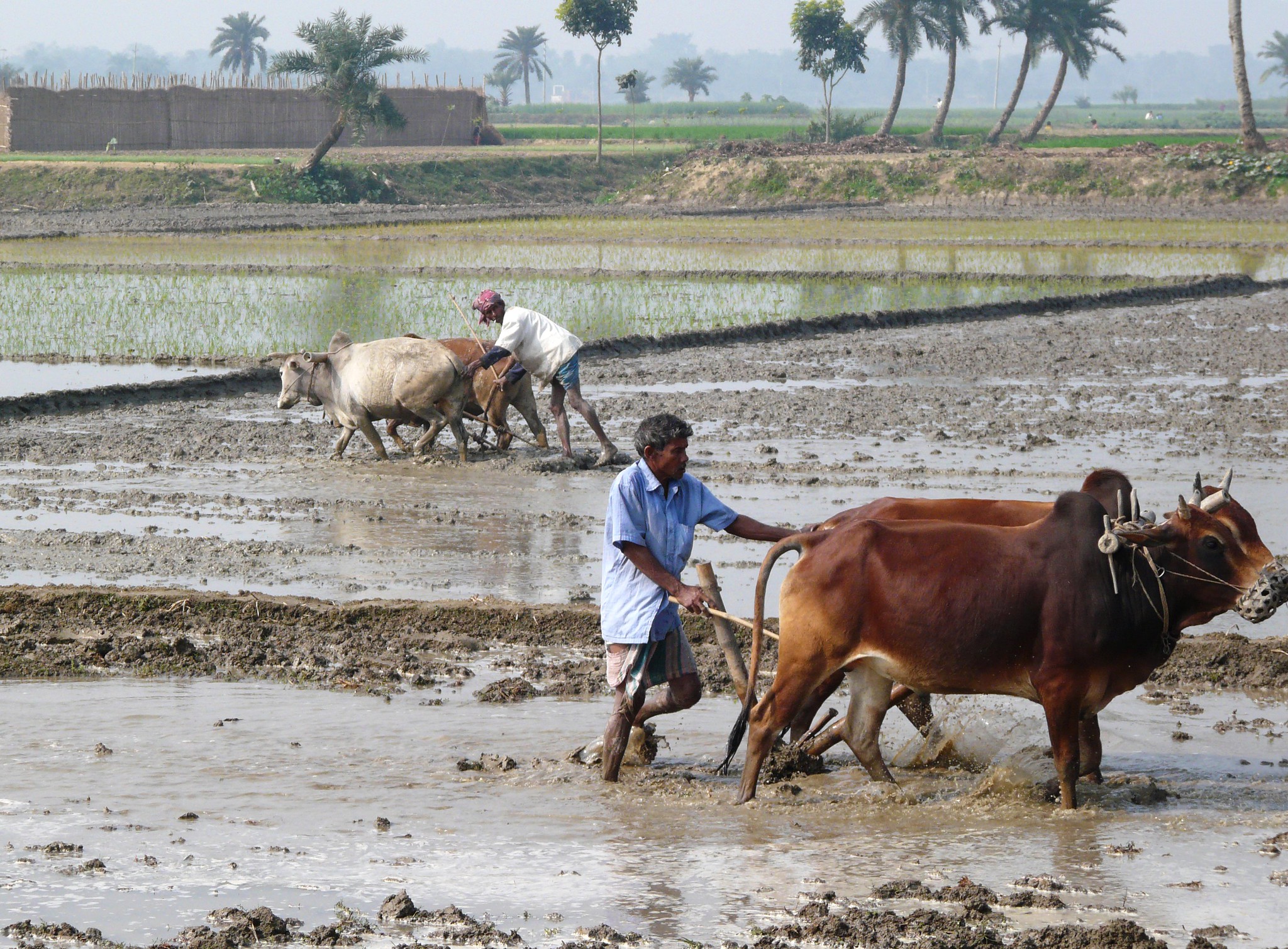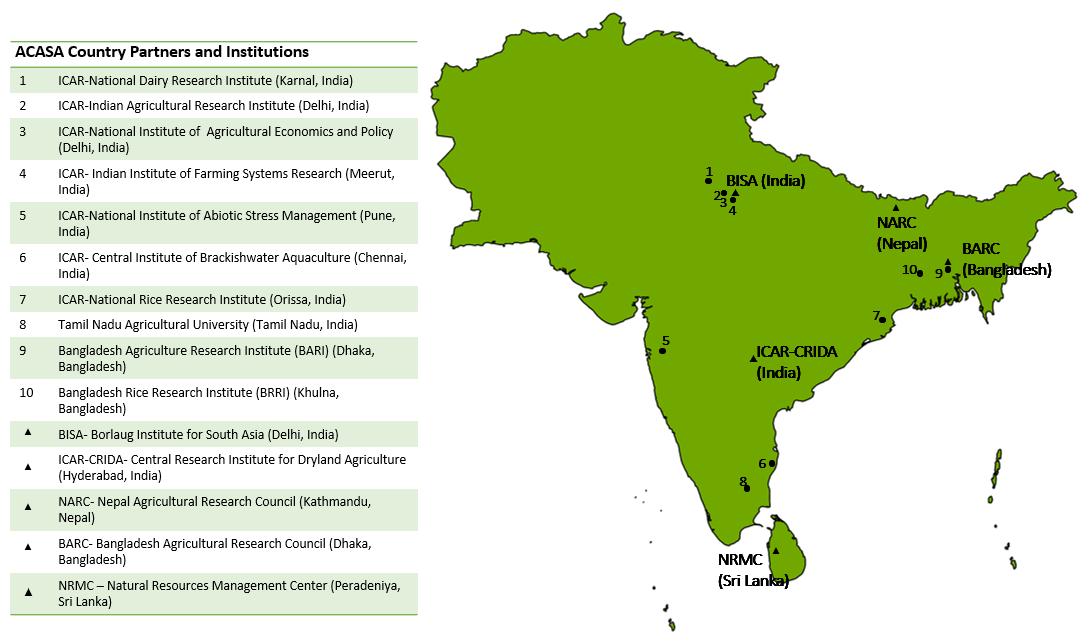To address the vulnerability of increased climate risks which impact agriculture, it is imperative to identify location-specific adaptation options. Atlas of Climate Adaptation in South Asian Agriculture (ACASA) is working on identifying commodity specific hazards at different geographical regions and the key adaptation options aligned with geography and hazards. This has been done for major cereal crops (rice, wheat, and maize), coarse grains (millets), oilseeds (coconut, mustard), legumes and vegetable crops (chickpea, potato), livestock, and fisheries. In ACASA, Systematic Literature Review (SLR) serves as a fundamental tool to identify key climate adaptation options and assess their effectiveness, considering agroecological factors.
Literature reviews are a customary approach for researchers to grasp existing knowledge and findings. The SLR methodically establishes clear research objectives, employs structured search queries to identify relevant literature, applies defined exclusion criteria, and extracts data for scientific analysis. This structured approach facilitates mapping the literature, validating findings, identifying gaps, and refining methodologies thereby minimizing biases, and ensuring comprehensive coverage of evidence.
Commodity-specific research questions, aligned with the problem/population, intervention, comparison/consequences, outcome, and time PICO(T) framework, have been used to guide the search process. By utilizing keywords specific to these questions, ACASA sourced literature from reputable databases such as Web of Science, Scopus, Google Scholar, and local databases of South Asian countries: Bangladesh, India, Nepal, and Sri Lanka. Local databases and gray literature further bolstered the understanding of local conditions and broadened the coverage of studied literature.

The searched literature was then filtered using the well-established Preferred Reporting Items for Systematic Reviews and Meta Analysis (PRISMA) framework. PRISMA provides a minimum set of evidence-based literature to be used for further analysis. Let us look at maize as an example of a commodity under analysis in ACASA. For maize, a total of 1,282 papers were identified and based on four exclusion criteria pertaining to adaptation options, quantitative assessment, hazard, and risk only of which 72 papers were shortlisted. The PRISMA framework supported in getting a manageable dataset for in-depth analysis while ensuring transparency in the overall filtering process.
After filtering through PRISMA, a bibliometric analysis was conducted which contained research trend analysis, regional distribution patterns, adaptation option categorizations, and a co-occurrence analysis. Useful patterns in popularity of studied adaptation options, hazards, and their linkages were observed through this analysis. For instance, drought was the most studied hazard, while pest diseases and economics were major hazard impacts studied for the maize literature. In terms of adaptation options, stress tolerant varieties were the most popular adaptation option. Further, co-occurrence analysis provided linkages between adaptation options and hazards, and demonstrated that researchers have also studied bundled technologies.
SLR helped understand the effectiveness of certain adaptation options. Going ahead, this step will be fully realized through a “meta-analysis” which will be pivotal in quantifying the evidence and prioritizing adaptation options for different agroecologies. SLR has proven to be an effective research method to build a comprehensive database that can be used across different thematic areas of ACASA. Adaptation options enlisted through SLR can be further substantiated through expert elicitations via heurism, crop modelling, cost-benefit analysis, and other important pillars of ACASA to identify efficient and cost-effective options.
SLR also provided the ACASA team with the opportunity to identify certain literature gaps such as uneven geographical coverage and excessive emphasis on certain adaptation options versus the rest. Conceptualization of systematically reviewing climate adaptation options in the South Asian context by integrating bibliometric and meta-analysis adds novelty to the current efforts of ACASA.
Blog written by Aniket Deo, BISA-CIMMYT India; Niveta Jain, ICAR-IARI India; Roshan B Ojha, NARC Nepal; and Sayla Khandoker, BARI Bangladesh

 Climate adaptation and mitigation
Climate adaptation and mitigation 
